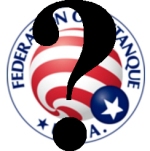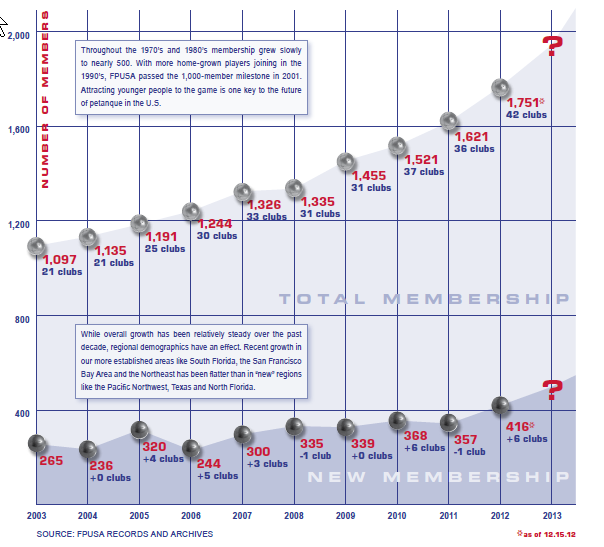
In this post we look at the benefits of FPUSA membership— that is, of individual membership and club affiliation. (Clubs are said to be “affiliated with”, not “members of”, the FPUSA.)
At the outset let’s note that FPUSA membership is really cheap— $15 a year for membership through an affiliated club, and $20 a year for an at-large “individual” membership.
Benefits of FPUSA membership
- FPUSA membership is required for participation in FPUSA regional and national championships.
- FPUSA membership is often required for participation in play and competitions in other countries. Ernesto Santos points out—
As an FPUSA member you get an international license that allows you to play around the world. In almost all other countries, you will need to show your license before being allowed to play in an affiliated club’s tournament (or even casual play). Many times they will collect that license before the start of a tourney and only give it back when you leave (provided you didn’t misbehave). If you don’t have a license you may be required to buy a day-license on the spot. And this holds true even for non-sanctioned open tournaments like La Marseillaise.
Benefits of FPUSA club affiliation
There are no club-level dues for FPUSA affiliation, but there is a minimum-membership requirement. FPUSA requires affiliated clubs to have at least 8 members for the first year of affiliation and at least 12 members during succeeding years. FPUSA will not “dis-affiliate” a club that cannot meet the 12-member requirement (the club can renew its affiliation and remain on the insurance policy), but the club’s voting rights are suspended until the minimum-membership requirement is met.
That means that
- If your club has fewer than 8 dues-paying FPUSA members, long-term FPUSA affiliation is not an option.
- If your club has at least 8 dues-paying FPUSA members, FPUSA affiliation is basically free.
Liability insurance
For a club, the primary benefit of FPUSA affiliation is the liability insurance that comes with that affiliation. If your club holds an event, and if someone gets injured during that event, then this insurance will protect your club and members from any financial damages for which they might legally be held liable.
- FPUSA doesn’t provide any information about its liability insurance on its web site. US Lacrosse, however, does, and that information shows that liability insurance is a more complicated affair than you probably imagine. The moral of the story: when your club gets its FPUSA insurance document, read it carefully.
Your local Parks & Recreation Department may require your club to have liability insurance as a precondition for holding an event at one of its facilities. When a club joins FPUSA, it receives a certificate of insurance that should satisfy that requirement. Further certificates are available from FPUSA upon request.
Non-profit status
FPUSA is a 501(c)(3) non-profit organization. Affiliated clubs (meeting certain organizational requirements) may receive a 501(c)(4) tax-exempt status through the FPUSA without having to file their own separate application with the IRS. This can be useful when setting up club accounts and dealing with state incorporation and taxation authorities.
New club benefits
During its first year of affiliation, a new club may be reimbursed by the FPUSA for up to $100 for purchases of petanque-related equipment— guest boules, playing circles, prize medals and trophies, club banners and signs, etc. During its second year of affiliation, a club is eligible for a 50% reimbursement of up to $100 on $200 in purchases.
Benefits to the sport of petanque
When an FPUSA national champion team travels to the FIPJP world championships, the FPUSA assists with the cost of travel. The money comes from entry fees for the national championship tournament (the international qualifier tournament); in addition 20% of FPUSA income from membership dues goes toward the travel costs. For any given trip, that amount might be somewhere between $500 and $1000 per person.
The bottom line
Clubs with fewer than 8 FPUSA members do not qualify for FPUSA affiliation. If such a club wants liability insurance, it will need to pay for it out of its own local club dues. Depending on the club’s location, such insurance may or may not be available and affordable.
For clubs with 8+ FPUSA members, FPUSA affiliation is a way to obtain free liability insurance.
For a club large enough to consider becoming a corporate entity, FPUSA can help in securing 501(c)(4) tax-exempt status. Warning! Before you do this, make sure you understand what it entails. It may result in FPUSA acquiring legal ownership of your club’s name, logo, etc.
For the serious individual player, FPUSA membership is required in order to compete in FPUSA-sanctioned tournaments at the regional and national level. In other countries, it may also be required in order to compete in any kind of competition.
For the casual player, your FPUSA membership helps keep your club eligible for the liability insurance that comes with FPUSA affiliation. (If you belong to an FPUSA-affiliated club that has its own, local club membership fees, part of those fees is forwarded to FPUSA as individual membership fees.) Your FPUSA dues also help defray the travel costs for Team USA to go to the world championships, but not by very much— only $3 of your $15 goes to support Team USA. If you really want to help, donate to the team’s Facebook fundraiser.










